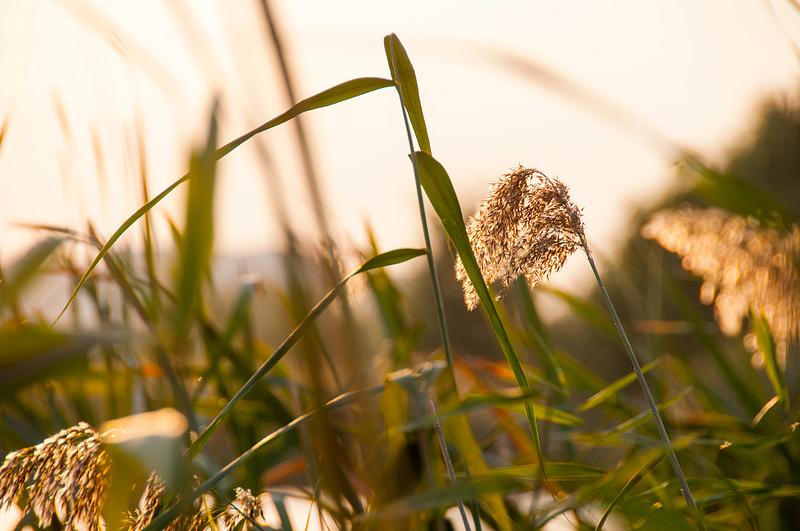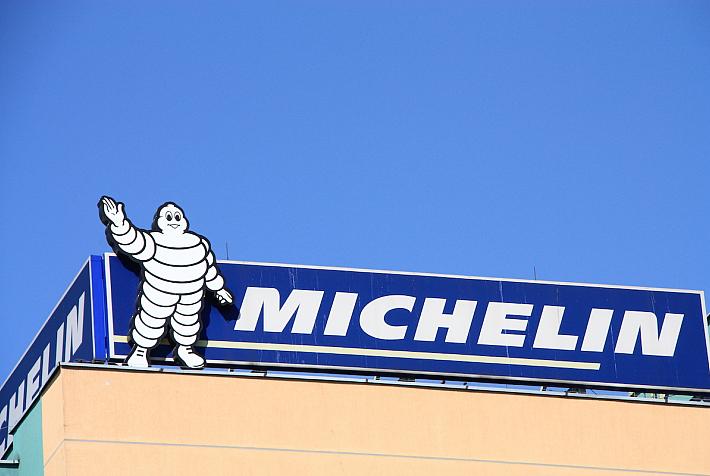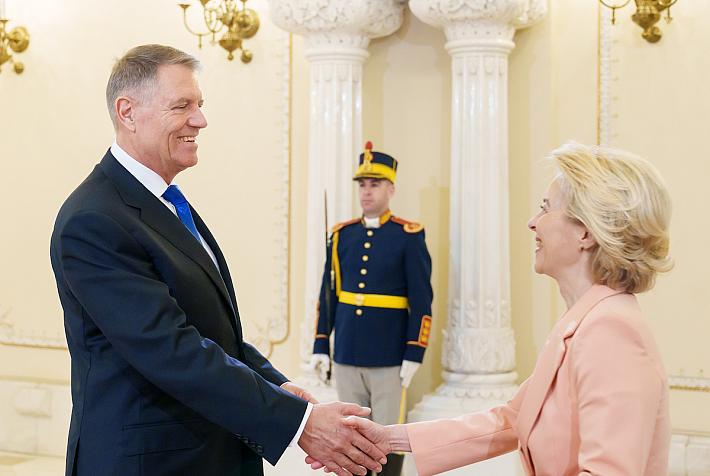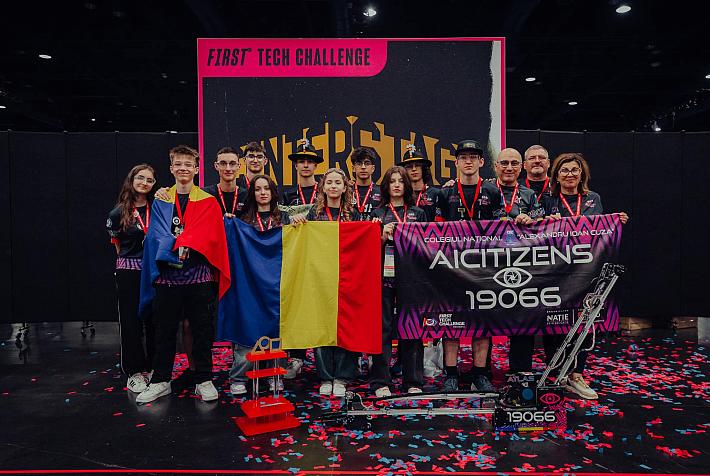Bucharest's five additional natural areas and the case for protecting them

Having Văcărești Nature Park as a model, the founders of the urban nature park, sometimes referred to as the Văcărești Delta, are working to give the city five additional protected areas serving as zones of biodiversity and educational and recreation settings.
Văcărești was established as the first urban nature park in the country in 2016, following the efforts of the Văcărești Nature Park Association. Located five kilometers away from downtown Bucharest, it is the city's largest compact green area, covering 183 hectares that nature reclaimed after a Communist-era hydro-technic project was abandoned. The Văcărești Nature Park Association, which administered the park until 2018, is now working to add five additional protected areas as the Văcărești Park turns into a replicable model for initiatives aiming to preserve and restore biodiversity in urban environments. The five areas are Pajiștea Petricani (Petricani Meadow), Bălțile de la Dobroiești și Valea Saulei (Dobroiesti and Valea Saulei ponds, part of the network of lakes on the Colentina river), Lunca Dâmboviței (the "delta" of Dâmbovița at the entrance to Morii Lake) and Băneasa Forest.
Home to a rich natural heritage, these areas host a variety of bird, mammal, reptile, and amphibian species. The project of the Văcărești Nature Park Association aims to integrate them into the fabric of the city. It is a community-focus effort, Dan Bărbulescu, the executive director of the Văcărești Nature Park Association, explains, as the association plans to involve neighborhood residents in the project, from knowledge dissemination and project co-creation to the various activities required on site. More on the identity and characteristics of these areas, the role they fulfill, and why water is part of the city's DNA in the interview below.
You have started mapping potential areas in 2021. How has the process been? Did you find out things you did not expect? Were there other areas on the initial list?
We started in 2021 with a project that looked at developing a national network of nature areas in urban environments and, first of all, at creating a network of stewards – NGOs or partners - at the level of Bucharest and nationally that would take care of those areas. When I say care, I mean not only conservation activities but, first of all, activities related to knowledge, dissemination, and meeting local communities and authorities so that the logic of nature in urban environments becomes known, not only to us, the specialists in nature conservation, but to the ordinary people, the citizens, and the authorities. The Văcărești Nature Park led us into this endeavor. This is where we started from and how we thought about it – to expand this endeavor outside of the park, meaning to expand this wish to get acquainted with nature.
In 2021, we started going to Băneasa Forest, which we had known before, but we started going with plans. Looking for wetlands especially, we went on the Colentina Valley or the Colentina network of lakes and started searching and discovered the Petricani Meadow, Valea Saulei /Valley of Saula, a tributary of Colentina River.
Valea Saulei is represented by a series of basins that, initially, were fish farming basins -now, they are abandoned. Close to Valea Saulei we have the Reeds of Dobroiești. It is an entire area of lakes and reeds, of nature that has reclaimed, so to say, the systematized banks of Colentina, and which now looks good from the point of view of nature. From an urbanistic perspective, they don't look very good, mainly because they are quite dirty since they have been abandoned.
[…] In Bucharest, historically speaking, we have turned our back on water. Bucharest is a city that has developed because of water and the roads intersecting here in the southern part of Wallachia, but what made it grow and gave it its dynamic, so to speak, was the existence of water. Of course, not as a navigation path but at the level of agriculture, fishing, and the richness of the soil. The history of Bucharest is tightly connected to the functions of the two rivers crossing it - Dâmbovița and Colentina, which were systematized, buried, and transformed in all ways possible, and of their nearby ponds. Some of them are part of our project. We cannot, and bringing them back to their initial state is not an option; this is impossible. But I believe the city's water, with everything this means, all this water landscape that is part of the city's DNA, deserves more attention.
We have focused on wetlands – ponds, reeds, the connected aquatic fauna, birds, the green and blue networks; we want to understand them better, and when I say understand I mean everything related to the monitoring, evaluating, and the scientific knowledge part. We wish to tell people about this, just as we did with the Văcărești Nature Park, because many of these areas are accessible, and with a minimum of interventions, they can enter the logic of educating communities, the residents of the neighborhood; last but not least, we want to obtain for them a nature protection status, just as we did for the Văcărești Nature Park. Maybe we are not talking about the status of a nature park, which is a strong status and a national level one. We would like to have another five nature parks, but I believe the simplest thing is to discuss all these ideas. We want very much to discuss our ideas and the idea of this project and develop and co-create it together with the people in the neighborhoods and with the public authorities. I would like us to put forth the need for protection, for making them accessible and safe, for preserving nature, discuss it based on scientific fundamentals, and decide together with the local community and the authorities.
Having the local authorities take them into consideration and have them better integrated into the life of the neighborhood will bring a solid plus to the development of the city, which will win more than 1,500 hectares of green area; it is already there. These areas are already on the map, but as they become more accessible and cleaner and people feel more responsible for them, they will automatically enter the city's development logic. I believe that Bucharest still has this characteristic that it knows very little, that of nature and biodiversity, which could become one of the trademarks of the future city. It is what drove us in this project.
In 2023, we opened a visiting trail in Petricani, with information boards and areas that are more accessible. This spring, we are continuing the work on the trail. We are in talks with the District 2 City Hall to take together decisions related to the interventions there because we are very interested, besides the visiting and promotion part, in implementing several meadow management measures, namely to mow some areas, monitor the insects and pollinators, and more.
We will start planning the other areas we talked about. Among the few or maybe last remaining areas of biodiversity in the city, there are others, but we have stopped exclusively at places that are the state's property, administered by public authorities – be they district city halls, the Romanian Waters Administration, or Romsilva. We are not looking at privately owned lands. We do not have the capacity to convince the land owners of the natural value of those areas compared to the value of real estate investments. It is not our job. But on state-owned land, we can, and we have the capacity to work with the public authorities, citizens, and other interested parties so that by the end of this program, which stretches over five years, we will have five new protected nature areas in Bucharest.
[...] They are bordered by neighborhoods. People who live in the area already know them. Some of them have a pretty uncertain identity from a landscape point of view. We wanted very much to work with this reality and be able to offer them another identity, with interventions that do not stop at the level of promoting, education, informing – all very important things – but go towards ecological reconstruction measures, measures to remove waste, to develop the forested areas by planting trees and shrubs, by removing invasive plant species. We wanted to offer the capabilities we have and accumulated at the Văcărești Park to the authorities and the community to develop these integrated projects in Bucharest.
From a biodiversity point of view, how do these areas compare to the Văcărești Park? What characterizes them?
We have had some very pleasant surprises going in. Văcărești Park is an extensive and compact area of biodiversity where wetlands are well integrated. The other Bucharest areas we are looking at differ in size and flow of water, in landscape, but they come with a solid natural heritage– in the case of Băneasa Forest, typical of forests – birds, mammals, tree species that do not exist in the Văcărești Nature Park. The same goes for the water surfaces at Valea Saulei or Dâmbovița, where there is a richer aquatic fauna, and the birds and mammals there are diverse. By integrating them into the city's development logic, the diversity of species and landscapes available to people – for recreation, sports, and educational activities – will greatly increase. These areas have all the arguments to become legally protected. These are not abandoned areas. Species protected by Romanian and European laws live there, from reptiles and amphibians to birds that stop there on their migration route. This nature argument related to the species exists. Bringing them into the city's development logic and including them in local strategies would mean an added biodiversity and a significant diversity of species, without any dangers.
I remember when we started with the Văcărești Park more than ten years ago, there were people worried that foxes might enter their homes or they might get bitten by otters. They [e.n the animals] were there before, they are there now, and I don't think such an animal bit anyone; just as there are martens in the Băneasa Forest or otters at the Colentina lakes. I'm not even mentioning the foxes. A protective regime will not lead to an increase. Nature has the ability to balance the contingents of species. Our aim is to protect these areas […]
We want to secure these areas. We have grown accustomed to equating development to a residential neighborhood. This is no longer the case. Development also means an infrastructure, be it civilian, natural or green-blue infrastructure (GBI). All these assets are very important in the dynamic of a city. We can look at any Western city and see that nature and green-blue networks are as important as sanitary infrastructure, transport, telecommunications ones, and so on. We are not reinventing the wheel but trying to talk to people, see what the best ways to preserve these areas are, and take care of them in the city's development.
Are there elements from the Văcărești Park model that you cannot transfer to these five areas?
There are many similarities. The Văcărești Park developed on the site of a hydro-technical project started during the Communist regime. Four of the five areas we are looking at, namely the network of lakes of Colentina and Dâmbovița, where it flows into Lacul Morii, are also areas that have undergone engineering works. We are talking about lakes built so that the flow of Dâmbovița and Colentina would be secured in the event of flooding. Some polders were created in the valley of Colentina and at Morii Lake – Dâmbovița so that the catastrophic floods from Romania's modern history, from the 19th century, would be avoided and controlled. From this point of view, we are talking about industrial areas that nature reclaimed in the past 30 years.
We would like, this time, because we are talking about different areas with their own characteristics, to talk more to people and ask them what they want there, how they value those areas, what they like and what not. We have learned some important lessons at Văcărești Park by going and talking to people. We would like to do this in a more organized way. And 2024 is already planned for us with such meetings in the community, where we invite people to talk about the dangers they sense concerning what a nature area is, about the joys they have, the birds they notice and so on. It is very important that nature is well integrated into the fabric of the neighborhood, of the community. Because this is where people are coming from. I don't expect someone who lives in Berceni to go to Colentina weekly because they have the Văcărești Park nearby. This is what I would like us to do more.
What do you have planned for this year?
This year, we have planned activities in Petricani; we will continue what we started last year and begin planning the other areas from the community point of view – namely, we will go and ask people what they like and what they don't. It is a planning year for us, one to work on the project's strategy. Specifically, in the field, we will continue the work we started at Petricani. We will expand the trail we opened last year with the District 2 City Hall. As a first, we will have the first meadow management measures there. We want to implement them with the community, with volunteers, because this is how we learn best, by including people who are interested.
What are some of the challenges you have encountered so far?
We have the experience of the Văcărești Nature Park, but ten years have passed since. The world has changed in the meantime. I am talking about positive changes that happened also due to the Văcărești Nature Park. There are public authorities that are much more open to this. I can give the examples of the District 2 City Hall, District 6 City Hall or Romsilva. People have heard about us and have started to understand the value of urban biodiversity.
Ten to twelve years ago, when we had the first meeting at a district city hall to talk about the Văcărești Park, I remember the lady there telling us, out of naivety, of course, it would not be possible. Things have changed a lot in the meantime and this is why I say it is challenging for us because we need to change parts of our endeavor as well.
We want very much, besides this work with the authorities and the advocacy part, to have conservation works on site – rewilding temporary ponds, removing allochthonous species, integrated nature-based solutions, monitoring, or meadow management. In the meantime, the world of nature conservation has developed by integrating urban nature, which becomes increasingly important as cities expand, and we need to adapt to this endeavor. But we have already started doing this, and I believe we will manage to answer these challenges that are, on the one side, scientific, on the other, let's say social-economic, political.
What would you like the city's residents to know about Bucharest's natural landscapes and the relationship we can have with nature?
We would like them to understand that nature is good and that a semi-wild landscape is very important in the structure of the city. We would like very much to befriend people to nature on several levels, on the one hand talking to them about the contribution of wild landscapes to the city's good life, about how these areas regulate temperature, air quality, rainfall and all these ecosystem functions they have and without which we would not be able to live in the city. We would like to get people closer to nature in a more detailed way.
Following our project, we would like people to walk on the street and notice the birds singing in trees, watch the butterflies that fly by the birds singing in the trees, and the bugs climbing the tree bark. We would like them to be more aware of the nature surrounding us, which is, fortunately, plentiful. […] Many times, in our daily trips, we ignore the tits (Paridae) singing every winter and which are like Christmas balls, but we do not notice them. It would be interesting to stop for a few minutes on the street and see the behavior of rooks (Corvus frugilegus), and, since spring is coming, to look up and notice the dance of the common swifts (Apus apus) and learn a bit about this extraordinary bird that doesn'tdoesn't stop from its flight unless it is nesting, otherwise it feeds and sleeps in flight. It is a sort of a quintessential bird. There are very many extraordinary nature-related things. We don't need to go to the Danube Delta, Comana, or Curmătura if we cannot. We find nature in our daily lives everywhere we look. Many times, we are talking about extraordinary species. With our project, we would like to make people more aware of this; I think they will be better off for it […] It is amazing how much the wildlife that exists in the city can change our lives for the better.
How have the species you mentioned fared since you started working on the Văcărești Park? How are they faring in the city?
To answer the question, I would need scientific data; otherwise, I'm offering opinions. I can mention several species that have disappeared or are hardly visible in the Văcărești Park because of the reduction of the water surfaces because they were dependent on these habitats.
There are several factors impacting biodiversity and urban biodiversity. One of them is the development of the city, soil imperviousness, and the emergence of constructions that tend to cover up everything. Another is the pollution you were talking about, which turns more aggressive and persistent and directly impacts insects and the species feeding them, such as birds or bats. Climate change – the change in the dynamics of seasons and the increase in temperature. […] This changing logic impacts what we know. Of course, nature has the power to adapt […], but it might just happen that during our lifetime, we will lose species that we considered common in the past. If we go to a park now, we can count 15-20 species of butterflies. In a not-so-distant future, meaning 10 to 12 years, we risk having only a handful of butterfly species. We are seeing this tendency of biodiversity shrinking and loss, caused by diverse and complex factors. And we would like to respond to this. Our project comes in to say that, within this global trend of biodiversity loss, we can continue to have these biodiversity islands that continue to offer the breath of nature.
These areas have been very important since they came into being; we are not inventing them. We would like to make them important for people. I am very glad that Fundația Comunitară, through the Environment Platform and with the support of ING Bank and other sponsors, have understood the need for our endeavor and those of other organizations working for biodiversity. We need biodiversity. We need the services nature offers in urban areas.
This interview has been conducted in Romanian and translated by Romania Insider. It has been edited slightly for length.
(Photo: Marius Scarlat |Dreamstime.com)
simona@romania-insider.com















